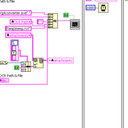Menadione sodium bisulfite inhibits the toxic aggregation of amyloid-β(1-42).
Kľúčové slová
Abstrakt
Protein misfolding and aggregation are associated with amyloidosis. The toxic aggregation of amyloid-β 1-42 (Aβ42) may disrupt cell membranes and lead to cell death and is thus regarded as a contributing factor in Alzheimer's disease (AD). 1,4-naphthoquinone (NQ) has been shown to exhibit strong anti-aggregation effects on amyloidogenic proteins such as insulin and α-synuclein; however, its high toxicity and poor solubility limit its clinical application. Menadione sodium bisulfite (MSB, also known as vitamin K3), is used clinically in China to treat hemorrhagic diseases caused by vitamin K deficiency and globally as a vitamin K supplement. We hypothesized that MSB could inhibit amyloid formation since its backbone structure is similar to NQ. To test our hypothesis, we first investigated the effects of MSB on Aβ42 amyloid formation in vitro. We found that MSB inhibited Aβ42 amyloid formation in a dose dependent manner, delayed the secondary structural conversion of Aβ42 from random coil to ordered β-sheet, and attenuated the ability of Aβ42 aggregates to disrupt membranes; moreover, the quinone backbone rather than lipophilicity is esstial for the inhibitory effects of MSB. Next, in cells expressing a pathogenic APP mutation (Osaka mutation) that results in the formation of intraneuronal Aβ oligomers, MSB inhibited the intracellular aggregation of Aβ. Moreover, MSB treatment significantly extended the life span of Caenorhabditis elegans CL2120, a strain that expresses human Aβ42. Together, these results suggest that MSB and its derivatives may be further explored as potential therapeutic agents for the prevention or treatment of AD.





